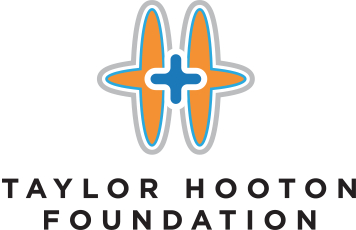January 14, 2016
A single energy drink could harm heart health for young adults
![[Energy drinks]](http://cdn1.medicalnewstoday.com/content/images/articles/302/302298/energy-drinks.jpg)
Drinking just a single energy drink may raise the risk for cardiovascular events among young, healthy adults. This is according to a new study published in JAMA.
Researchers found that a single can of energy drink increased blood pressure and stress hormone responses among young adults.
First author Dr. Anna Svatikova, a cardiology fellow at Mayo Clinic in Rochester, MN, and colleagues found that young adults who consumed one 16-ounce energy drink showed a rise in blood pressure and an increase in stress hormone responses within 30 minutes, which may raise cardiovascular risk. The team presented their findings at the American Heart Association’s Scientific Sessions 2015 on Sunday. Energy drinks – marketed as beverages that can boost physical and mental performance – are growing in popularity, particularly among adolescents and young adults in the US. According to the Centers for Disease Control and Prevention (CDC), energy drinks are regularly consumed by around 31% of teenagers aged 12-17 and 34% of adults aged 18-24. But with the rise in energy drink consumption comes an increase in public health concern; the beverages have been linked to a number of severe side effects. A study reported by Medical News Today in 2013, for example, linked energy drinks to altered heart function. What is more, a 2013 report from the Substance Abuse and Mental Health Services Administration (SAMHSA) found the number of emergency department visits in the US involving energy drink consumption more than doubled between 2007-11, from 10,068 visits to 20,783. Caffeine is believed to be the most harmful ingredient in energy drinks; a single can or bottle contains anything from around 80 mg of caffeine to more than 500 mg. For comparison, a 500 mg cup of coffee contains an average of 100 mg of caffeine. Energy drinks also have a high sugar content and may contain other plant-based stimulants that produce side effects comparable to those of caffeine.Energy drink vs. sham drink
For their study, Dr. Svatikova and colleagues set out to investigate how energy drinks affected the blood pressure, heart rate and stress responses of 25 healthy adults, compared with a placebo drink. Participants were an average age of 29 and had no known cardiovascular risk factors. On 2 separate days, a maximum of 2 weeks apart, subjects were asked to consume either one commercially available 16-ounce (480 ml) energy drink or a sham drink within 5 minutes. The energy drink contained around 240 mg of caffeine, 2,000 mg of taurine – an amino acid believed to aid neurological development and regulate water and mineral levels in the blood – and extracts of guarana seed, ginseng root and milk thistle. The sham drink had the same taste, texture, color and nutritional components of the energy drink, but it lacked caffeine and other stimulants. The study was double-blind, so neither the participants nor the researchers knew which drinks participants were consuming on which day. Participants were asked to refrain from drinking alcohol or caffeine in the 24 hours before each study day. Before and 30 minutes after each drink was consumed, the researchers measured participants’ blood pressure, heart rate, blood caffeine levels and blood glucose levels, as well as the release of the stress hormone norepinephrine. Norepinephrine, or noradrenaline, increases blood pressure, affects the heart’s ability to contract and alters heart rate and breathing in response to stress.71% rise in norepinephrine levels after energy drink consumption
The researchers identified a significant increase in caffeine levels after participants consumed the energy drink, while the sham drink did not affect caffeine levels. After energy drink consumption, participants experienced a 6.2% rise in systolic blood pressure and a 6.8% rise in diastolic blood pressure. The average rise in blood pressure among participants was 6.4% following energy drink consumption, while an average 3% rise in blood pressure was found after consumption of the sham drink. What is more, the team found norepinephrine levels increased from 150 pg/mL (picograms per milliliter) to 250 pg/mL after energy drink consumption, compared with a rise from 140 pg/mL to 179 pg/mL after consumption of the sham drink. This represents a 71% rise in norepinephrine levels after energy drink consumption, compared with a 31% rise after consumption of the sham drink. The team identified no differences in heart rate after energy drink or sham drink consumption. Dr. Svatikova believes the team’s findings are a cause for concern, as the increase in blood pressure and stress hormone responses identified after energy drink consumption may “predispose an increased risk of cardiac events – even in healthy people.” She adds:“These results suggest that people should be cautious when consuming energy drinks due to possible health risks. Asking patients about energy drink consumption should become routine for physicians, particularly when interpreting vital signs in the acute setting.”There are some limitations to the study, the authors note, including the small sample size and the fact that they only tested the effects of a single brand of energy drink. They conclude that further studies are warranted to determine whether the changes in blood pressure and norepinephrine identified are likely to increase cardiovascular risk. In August, MNT reported on an infographic created by personalize.co.uk that claims to show what an energy drink does to the body within 24 hours of drinking it.
